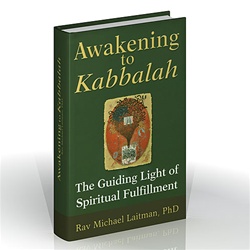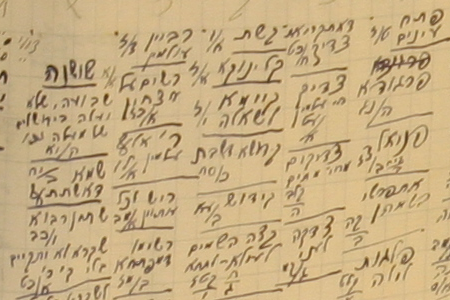What Secrets Lie in the Torah?
People search for all kinds of codes in the Torah and find all the possible interconnections among its parts. Indeed, the parts of the Torah are interconnected in an infinite number of ways— the number of the letters, the words, the verses, and the phrases have been calculated. Recently, a fantastic work of calculation analyzed the inner structure of the letters and parts of letters. But those calculations give us nothing. They don’t teach us what stands behind each symbol or dot, or the shape of the letters and their combinations.
What the Dots and Lines in the Torah Mean
The Torah was first written as a single word with no spaces. Only later was that single word divided into individual words and the words into letters, and those letters were further broken down to their parts. In the end, these parts become a point and a line that extends from it. A black point on a white background symbolizes the source of the light: the light emanates from the single point. If the light descends from the upper force, from the Creator to the creature, it is a vertical line; if the force is ascribed to the entire creation, it is a horizontal line.
This is all the information that we get from the Creator. All the possible combinations between dots and lines depend on those two signs sent to us from the Creator:
- The vertical line—a personal sign sent to humankind by the Creator
- The horizontal line—a general sign sent to humankind by the Creator
- All the situations in between
All the signs combined created the code for the relationship between God and humankind, and at any moment things can appear different because at any moment the soul is in a dif- ferent state.
Why The Book of Zohar Is the Key that Unlocks the Torah
A person who looks at the letters of the Torah, provided he or she has learned to read it correctly, can see his or her own past, present, and future through the combinations of dots and lines. But to see these things, one needs a key. With it, one can read the Torah like a tour guide to the spiritual world as opposed to simply a historic episode. This key is found in The Zohar, which interprets the Pentateuch and explains exactly what Moses meant by writing the Torah.
When we study the five books of the Pentateuch through the eyes of The Zohar, we see something entirely other than our world; we see the upper world, the spiritual leadership of our world, and the entire creation. That is why Kabbalists read those two books together.
How the Mishnah and Talmud Help to Complement the Torah
Before printing The Book of Zohar, Moses’s students and followers wrote, over several hundred years, basic interpretations of incidents in the Torah so that we could better under- stand what Moses had written. The first interpretation of the Torah is the Mishnah, from the word sheni, shanah (something that repeats itself). The Mishnah portrays all the spiritual laws as laws of this world. It explains what one must and must not do. We know these explanations as Mitzvot (commandments, precepts) of “do” (positive precepts) or Mitzvot of “do not do” (negative precepts).
Only Kabbalah can explain these actions. It explains that the most important thing is not the worldly act, but the aim in the spiritual world. What a person does with his or her internal intentions matters. That is precisely what the sages and the disciples of Moses tell us about.
The Talmud was the next generation, whose sages explained the right way to keep the Mitzvot in each and every situation. But they also understood that it was not about the mechanical observation of Mitzvot in our world, but rather that through these Mitzvot, in their correct spiritual context, we may study the nature of our world and the upper world in the best way for us.
Though the Mishnah and the Talmud explain each spiritual law in detail, they are written in everyday language. Hence, if you do not have the code for The Book of Zohar, you only see the Mishnah and the Talmud as recommendations for the right way to lead a religious, orthodox way of life.
Kabbalah: Bridging the Gap Between Man and Nature
All great Kabbalists, meaning all those sages of the Mishnah (the Tanna’im) and the Talmud (the Amora’im), explained in their texts the system of creation and how we can best use its laws. They explained the reason why these forces come down to us and how we can use them to get a positive response and ultimately become vital and active parts of creation.
When these forces come to us from above and we react to them correctly, our responses climb up again and bring down to our world good results for everyone. This is the task of Kabbalah, also called the Wisdom of Kabbalah. The word Kabbalah comes from the word lekabel (to receive), meaning to learn how to receive the abundance that comes to us from the upper forces correctly.
A person who begins to study Kabbalah can clearly see that the reason for all the pains and catastrophes we experience both on the personal and global level is that we do not correctly interpret what happens around us. Because of our benighted behavior and incorrect reaction, our situation and the consequences that return to us increasingly worsen.
Kabbalah is the most practical science. It provides humanity the key to the leadership of the world. But for us to lead it, we must first study it. For that we need to know the general structure of the universe and its system of management, so that we may know how to take an active part in it.
 “Forget the Da Vinci Code, Discover the Torah Code” is based on the book, Awakening to Kabbalah: The Guiding Light of Spiritual Fulfillment by Dr. Michael Laitman.
“Forget the Da Vinci Code, Discover the Torah Code” is based on the book, Awakening to Kabbalah: The Guiding Light of Spiritual Fulfillment by Dr. Michael Laitman.
![]() Start Your Kabbalah Studies Here: Take a Free Kabbalah Course »
Start Your Kabbalah Studies Here: Take a Free Kabbalah Course »

